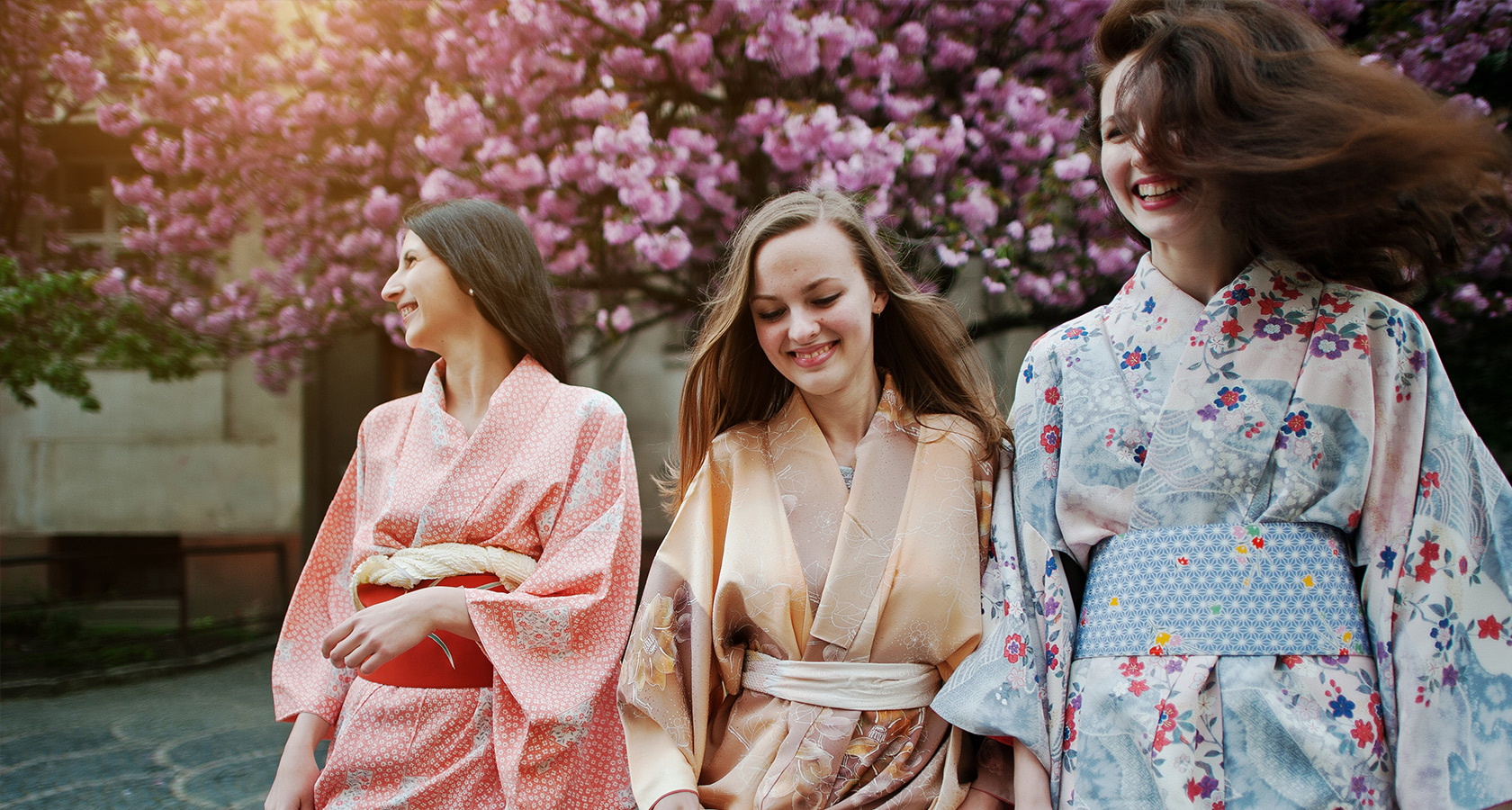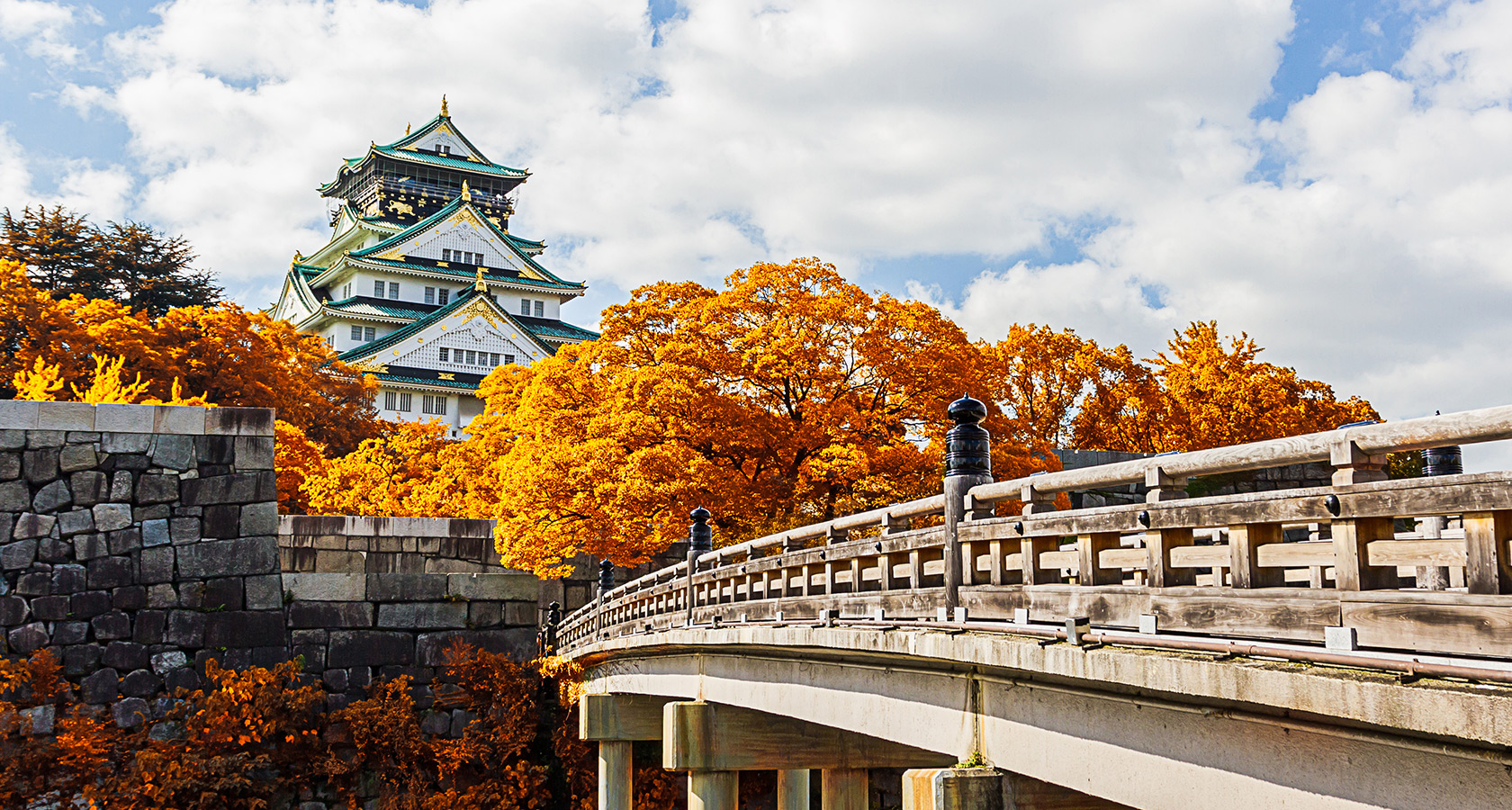
Kimono, which means a “thing to wear” (ki “wear” and mono “thing”), is the quintessential Japanese robe and one that resonates with an air of deep tradition and sophistication.
Kimonos range from beautifully colourful, intricately decorated with gorgeous patterns, to plain white, stunning in its simplicity. They can be worn by men as well as women, and are the height of formal wear in Japan, usually reserved for special occasions or celebrations.
Kimono are traditionally made from a single sheet of fabric, known as a tan, which typically measures a little under 40 cm wide and 11.5 meters long. This sheet is then cut into four strips, one each for the left and right sleeves and 2 for the main body. Smaller strips also make up the collar, but everything is cut from that original single sheet of fabric. The garment is always fastened with a wide, decorative belt, or Obi, which can be tied in numerous, imaginative ways to add to the style of the kimono. It’s also essential to wear traditional footwear, including split-toe socks known as tabi, which make it possible to wear the appropriate shoes, either zori or geta, both open sandals which perfectly compliment the kimono.

The kimono has changed very little over the centuries, and it was originally inspired by Chinese culture of the Tang Dynasty, which played a big part in influencing Japan over 1000 years ago, bringing not only fashion but philosophy, religion and a writing system.
Males often wear the lighter cotton yukata for more informal occasions, such as summer festivals, and the hakama for more serious events like weddings. A hakama is much like a kimono, apart from the legs are split so that they almost resemble a pair of trousers. Hakama are very rarely as colourful as a lady’s kimono, and more plain colours like grey, navy blue and white are often used.
A female kimono is by far much more complex, with a wide variety of variables. The obi can be tied in different ways to individualise each outfit. Everything from the style and colour of the fabric to the length of the sleeves is steeped in meaning and can give an insight into your social standing. For example, the exceptionally long sleeves of the furisode, which can be up to 110cm long, should only be worn by young, unmarried women, most commonly at their “Coming of Age Ceremony” or as guests to a relative’s wedding. Kurotomesode is seen as the most formal wear for married women, commonly worn by mothers of the bride or groom at a wedding. This kimono style is comparatively simple, with a single colour decorated only with kamon or family crests.
The kimono is not only for celebrations, however. The mofuku style of kimono is worn by both men and women and is the most formal mourning wear available in Japan. For men, it is most commonly a plain black, silk robe, with a white tabi (socks), black or white zori (sandals) and an understated obi (belt). For women, however, the robe, belt and all of the accessories should be black. This all-black kimono is usually only worn by relatives of the deceased, or those that are especially close to them.
Perhaps the most renowned style of kimono is the susohiki, the style that is worn by geisha. It is longer than most other kimono, with the fabric trailing behind the women, instead of stopping at her ankles. Hence, the geisha have to subtly lift their kimono while walking , which also has the added bonus of showing off their decorative nagajuban or under-kimono.
There are many locations in Japan to enjoy the experience of wearing a kimono, but perhaps Arashiyama in Kyoto is the most popular. The kimono you can rent are beautiful, the makeup artists are both professional and quick, and the location is stunning, a wide babbling river, traditional shops, temples, shrines and huge bamboo forest, it is almost as if a scene from classical Japanese literature has jumped off the page and into life.